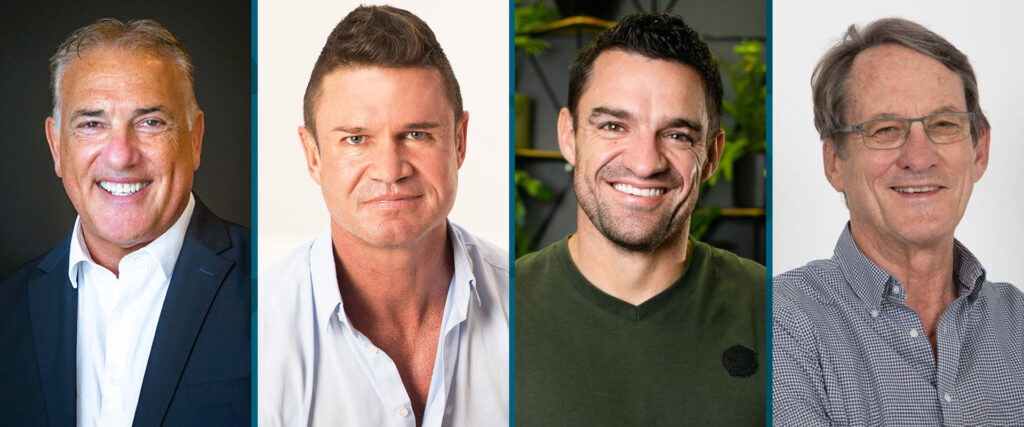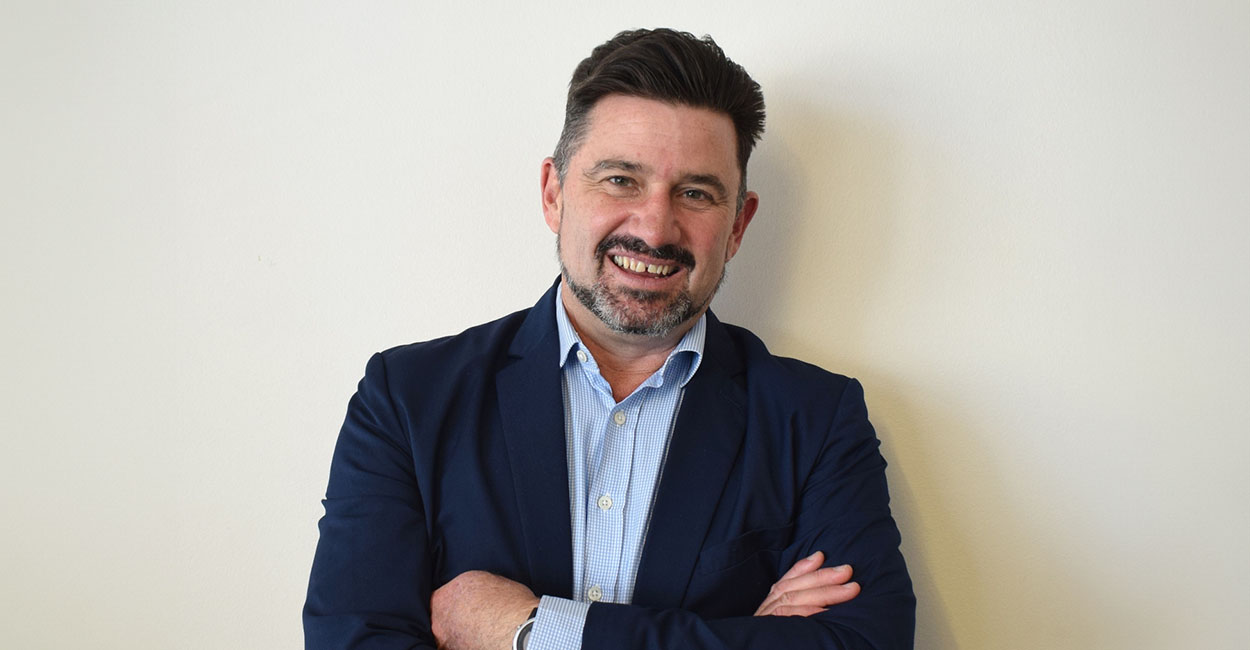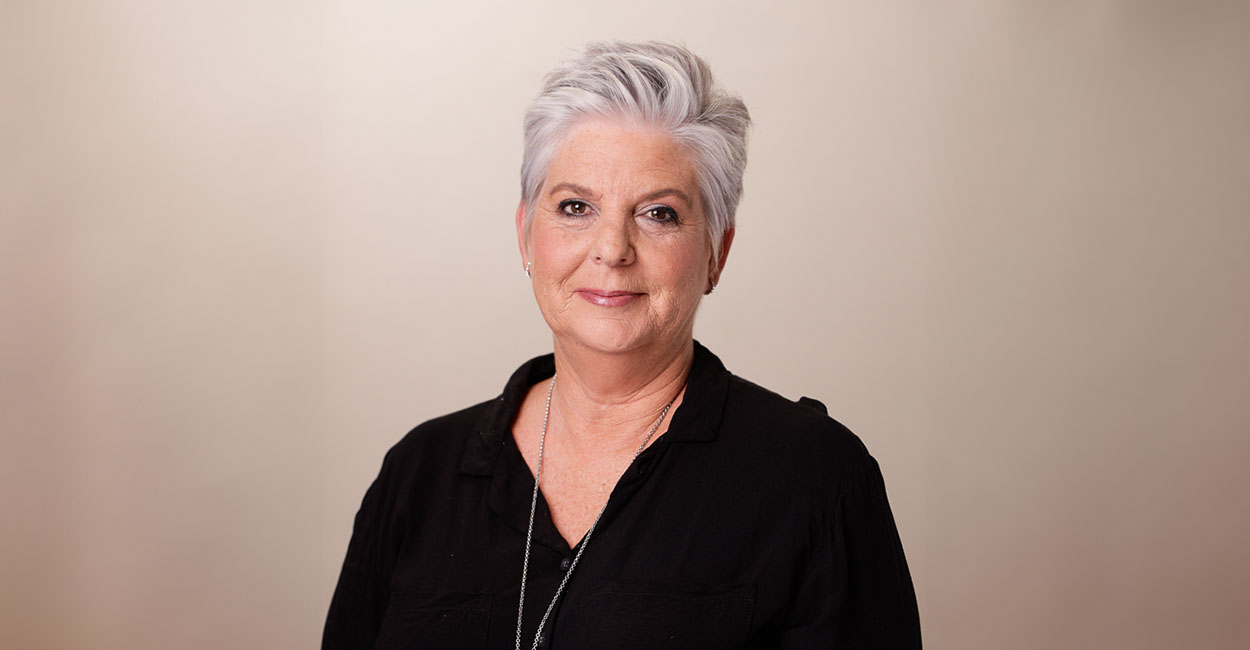MAIN IMAGE: Samuel Seeff – chairman of Seeff Properties, Berry Everitt – CEO of Chas Everitt International Properties Group, Grant Smee – MD of Only Realty Property Group, and Jan le Roux – CE of Rebosa
Editor
At the recent REIS event, Zintle Oyiya – ABSA manager of strategic positioning and partnerships, chaired a panel discussion with industry heavyweights Samuel Seeff, Berry Everitt, Grant Smee, and Jan le Roux. The panel covered everything from events at the PPRA, and HOAs, to current market conditions, proptech, industry regulation, compliance, the future of mom-and-pop agencies and more.
If you didn’t have the opportunity to attend this insightful discussion, don’t fear; we’ve done our best to cover all the topics here.
Let’s discuss the challenges being experienced by the PPRA?
Jan le Roux: I think the acting CEO is like the new broom sweeping clean, I think she’s doing a stunning job in trying to rectify very old problems within the institution. We support her in that. I’m also very excited that they took the first steps to act against the undesirable business practices we have abhorred for so many years.
Accreditation fees are such a waste of time and money. I had a discussion this past week with the manager of a homeowners’ association, who gave me all the reasons why they should charge a fee, from security to training, etc. But he also had an agent who was not registered, and he’s withholding their seller’s clearance certificate, thereby punishing the seller, in an attempt to force the agent to pay either a R5,000 fine or registration fee for selling a property in the estate, which of course is totally ridiculous. It is an admittance that it is only about collecting fees.
At Rebosa we’ve created a page on our website where agents can anonymously report these HOAs, which will then also be shared with the PPRA.
Because these agents are caught between a rock and a hard place, if you don’t pay, you can’t trade. If you pay, you get prosecuted. So, the sooner we eradicate it across the board, the sooner the playing field will be level.
I’d also like the PPRA to look into the issue of candidates not being qualified. The last time I looked, more than half of the industry was constituted by candidates who did not have adequate qualifications. The new regulation says you should be able to do NQF4 before joining the industry. You must finish it within 180 days. It’s a clear requirement that hasn’t been implemented almost two years later.
There’s been a lot of consultation with all the relevant industry bodies, and we are now waiting for the PPRA to implement a new education and qualification standard as quickly as possible. This would also help with transformation and clearing the qualifications backlog.
What’s happening in the market?
Samuel Seeff: Much has changed in the last decade. Let’s talk about the market – it’s very similar to the weather; it depends on where you are.
It’s been an interesting few years; we had a fabulous period when the interest rates went down to 7%, there was a great amount of activity, a lot of excitement, and a lot of transactions taking place, and clearly, that has levelled off. And so, when we talk about the different geographical areas within South Africa, you will have different markets.
We all know there was talk about the semigration to the coastal markets, which have been more active than that inland. Coming from Cape Town, I think they’re enjoying it. Gauteng is where our economic power is and where the activity should be.
It’s frustrating, but seeing that things are slowing down is understandable. And I think a couple of things govern us: firstly, the high interest rates, and secondly, I think it’s the political uncertainty that’s causing buyers to hold back.
Hopefully, we’ll have a little bit of a run until the end of this year. The numbers every month are not that bad. I think we’re probably all trading better than we did three or four years ago, but not better than we were when the interest rates were up.
So, it’s a mixed bag, and it depends on where you are, whether you’ll be able to say there’s more demand or less, and, uh, we’re just going to have to live with that.
What changes have we seen over the last few years?
Berry Everitt: Regarding the changes we’ve seen over the last couple of years, Covid has had a significant impact, where people have learned to work from home, and there’s been a forced uptake in using technology. Both elements impact the industry in that agents spend less time in the office and use technology that allows for greater efficiency.
I think that’s benefited us, and I like looking for opportunities within the chaos. I think what’s benefited us is the Internet of Things. Because we’ve got bandwidth that we didn’t have then and everybody’s got devices, they can’t get access to the Internet.
What can estate agents do now, within the current market?
Berry Everitt: As challenging as the market has been since I’ve been in the industry, it’s cyclical. We’re in a cycle with high interest rates and feeling consumers’ pain, something I think we’ll experience more of in 2024. As real estate professionals, we have an opportunity to find those people who have that need and actually provide for them.
We can’t change the interest rates. We can’t change any of the market conditions. Ultimately, I think it’s the consumer we must be looking towards. As real estate professionals, if we are guided by using the right tools and the data we have access to now, we can make a big difference in people’s lives.
What shifts have you noticed recently regarding the tools of the trade and consumer behaviour?
Grant Smee: Our business has a slightly different view. As a newer company, our clients are primarily our agents. Investing in technology, data, and everything else is a product of our investment in our people. The research space is sensitive to consumer behaviour, often driven by the practitioners they’re speaking to rather than external factors. Our focus and investment are on our teams, customers, and clients, giving them tools to interact effectively.
Our primary focus and investment are directed towards our teams, customers, and clients, categorised by age groups. Initially, we equip them with tools to enhance their interactions with clients, an essential aspect of our service. The current consumer landscape shows a notable shift towards online portals.
However, the reliance on portals raises concerns, hindering agents’ engagement in their respective spaces. Consumers are increasingly questioning the value added by real estate professionals.
How is the disruption and innovation received in the market and industry by your peers?
Grant Smee: Disruption in our industry is challenging due to the importance of human interaction and relationships. Technology finds it difficult to disrupt these aspects. Some businesses that claimed to be disruptors merely offered the same service at a lower cost, relying on volume for survival. Internationally, online platforms are less impactful than expected. We focus on investing in our people, fostering the right culture, and providing the right products.
Let’s delve into the role of proptech
Samuel Seeff: Recently, I came across an article about an American company called Compass, led by CEO Robert Remington, boasting 750 developers dedicated to updating their proptech. He emphasised the significance of proptech, particularly focusing on what he termed as “high tech.” According to him, the crucial aspect is the high touch – the ability for agents to engage directly with clients in person. This aligns with Grant’s perspective, emphasising the importance of technology while recognising that our industry centres around relationships, trust-building, and creating opportunities for one-on-one interactions.
We don’t foresee this emphasis on personal connections diminishing.
How do you balance between high touch and high tech?
Berry Everitt: Ultimately, every business forms its identity, a unique character shaped by its values. These values, in turn, define the culture of the business. People resonate with businesses that share their values, making it crucial to establish a strong identity. As Grant highlighted, the primary customer in our business is our staff, serving as messengers to the market. Our environment, technology, tools, and the opportunity to develop and train staff are pivotal in fostering a positive work experience.
Staff members, in turn, must enhance their skills within our provided environment to better serve customers and consumers. Our focus on human resources aligns with the idea that technology is an enabler. In a world designed to connect people, our mission is to facilitate these connections, making them faster and more efficient with enhanced knowledge about those connections.
Our business, established 43 years ago, maintains a vital mission but adapts its models to changing times. Technology remains a crucial enabler, supporting our core function of connecting people and bringing them together.
There is a need for property practitioners to stay abreast and ensure that they are developing and upscaling. Are we seeing that drive in the industry?
Jan le Roux: Let’s delve into upscaling and development within the real estate industry. Currently, there’s a significant gap that needs addressing. Though legally obligated, the mandatory training is predominantly technical, falling short of keeping professionals at the top of their game. There’s room for improvement, and one exciting development is the new regulations allowing private entities, including practitioners, to create Continuing Professional Development (CPD) programs.
We are actively working on leveraging this opportunity and hope to introduce more valuable CPD programs to the market. The aim is to offer agents programs that are not only progressive and transformative but also tech-oriented, focusing on sales strategies and other relevant skills. This shift aims to provide agents with more dynamic and applicable training opportunities. So there’s a long way to go on that.
How do you manage different brands under a larger umbrella? How do you manage the skill level?
Grant Smee: One of the benefits we’ve observed is aligning multiple brands under a unified core training structure. This includes mandatory training required by the Act and soft skills, negotiation skills, and other essential competencies. Simplifying the training framework in our structure opens up numerous possibilities. We can achieve more consistency and provide our teams with more frequent and regular access to training opportunities.
An issue we’ve noticed is that many agencies not only fail to provide training but also neglect to focus on developing essential skills, especially in areas like residential sales. These critical soft skills are often overlooked within the industry, and that’s where teams play a vital role.
Our focus extends beyond mere development to incorporating best practices and global trends. We keep a keen eye on how property practitioners move globally, learning from their experiences and adapting them to the South African context. Simultaneously, we contribute to the global market by sharing insights and practices that make our industry unique.
Where is the property practitioner heading, both locally and abroad?
Samuel Seeff: Over time, I’ve observed a significant shift, possibly originating in the US, regarding the roles of different participants in the real estate industry. Real estate companies and brokerages increasingly focus on providing robust support, advanced technology, and efficient systems. This allows agents to spend more time in the marketplace, fostering greater individual ownership of their personal brands—an emerging trend I’ve witnessed.
This transformation is notable, especially considering the evolution from traditional advertising methods like newspapers to online advertising and marketing through platforms like private property. The shift has levelled the playing field, emphasising the significance of individual agent brands. Real estate companies have adapted to this change, recognising that agents play a crucial role in their databases, networks, and community involvement.
Unlike in the past, where brands did the bulk of the building, now there’s a need for more partnerships. Agents have become entrepreneurs with personal web pages, Instagram accounts, and active engagement in the marketplace. They’re essentially building their own business within the broader business context—a collaborative effort. For brands, the challenge is to adapt, understand, and provide the necessary technology and systems to empower agents to thrive in a competitive marketplace. It’s no longer just a battle between brands; it’s about brand and agent collaboration against others in the industry.
What can we teach each other?
Berry Everitt: Being part of a global network with 150 of the best firms worldwide, we have the privilege to engage with industry leaders at the highest level. This global perspective provides valuable insights into how we fare in the real estate landscape as a South African entity.
Organisations like ours aim to provide a platform for them to shine. Every agent may shine at their own pace, and our development programs should cater to those individual timelines. The leadership qualities developed within our agents become crucial in a self-managed industry.
The industry has evolved, and agents are no longer passive followers. They possess their own leadership abilities. While management is essential for compliance, systems, and training, the leadership qualities within agents are what stand out. Real estate is inherently self-managed work, and leadership qualities make agents shine through.
Each agent is unique, and it’s crucial to recognise their individual levels and cater to their distinct needs. The emphasis is on developing agents along a full career path, aligning with their dreams and ensuring the service level across the value chain resonates with consumers, encouraging repeated engagement.
The importance of universal brand behaviour, where confidence is found in the brand, is highlighted. Multiple brands can coexist, catering to different preferences. Consolidation of costs is another benefit of having multiple brands. Agents are encouraged to assess the stability of the management teams within agencies they consider joining, recognising that collapses can impact agents who may need to find new spaces to work.
Having experience with the NAR in America, what are some trends and practices translatable to the SA market?
Jan le Roux: An intriguing development in the U.S. has been a recent significant court case involving a buyer and seller agent. The outcome of this case, which was lost, might potentially lead to substantial changes in the U.S. real estate marketplace over the next decade. The implications are uncertain, raising questions about how they will adapt if the appeal against the decision is unsuccessful.
In South Africa, this development emphasises that our current business practices may position us well. However, I would like to highlight the significance of small firms, which have been the backbone of our industry for many years.
Over 60 percent of the turnover in South Africa comes from these smaller firms. Due to numerous compliance issues, there is a practical need for support systems, especially for smaller firms, allowing them to focus on their core business rather than getting bogged down in compliance.
The compliance landscape is a critical factor, and it’s apparent that building on and breaking through existing regulations plays a role. As we talk about building tomorrow together, the evolving landscape of compliance and regulation is a central theme that requires attention and adaptation.
What should we keep in terms of regulation within the industry?
Samuel Seeff: Our industry’s current state of compliance and legal requirements is excessively burdensome. To manage this, we have brought on board a full-time compliance officer, who is now an integral part of our management team. The analogy is drawn to banking regulations, where the scope of requirements is comparable despite the substantial size difference between banks and our industry.
What’s concerning is that the same set of legislation requirements, covering aspects like FICA, POPI, compliance officer duties, and employment equity plans, apply universally. This is impractical and unreasonable, especially for smaller entities like mom-and-pop setups or husband-and-wife teams working from home. The same complexity and demands that larger offices face are expected from these smaller setups.
The attempt to professionalise the industry, as seen with the Property Practitioners Regulatory Authority (PPRA), is understood. However, the level of understanding required for estate agents to navigate through legal complexities is challenging. We now have compliance reminders sent out regularly, diverting attention from client-focused activities to administrative compliance tasks.
The compliance burden is reflected in the routine reminders sent by our compliance team, addressing various tasks from documentation upkeep to displaying certificates. This ongoing commitment to compliance consumes a significant portion of time that could otherwise be devoted to client-facing, income-generating activities.
The introduction of the POPI Act (POPIA) is acknowledged as an industry-wide obligation. However, finding an acceptable way to implement it while maintaining smooth interactions with buyers and sellers is a significant challenge. Compliance with intricate regulations, such as proving consent for contact years later, adds complexity and hinders practical business practices.
The challenges posed by international standards, such as FICA, are acknowledged, with a recognition that these standards may have different names overseas but are integral to global practices. The significant impact is highlighted for smaller and medium-sized organisations, which struggle to scale up and lack the resources to invest in technology to access necessary information. This imbalance raises concerns about the industry’s future landscape, potentially favouring larger entities over the diverse landscape that once included numerous mom-and-pop operations.
Jan le Roux: We certainly don’t have all the solutions, but one idea that cropped up is to look at something like FIC. Why duplicate efforts when lawyers can handle similar tasks more comprehensively for clients? We should rethink newer, potentially less complicated processes.
Smaller firms face a challenging road ahead. Exploring collaboration, such as forming groups or franchise partnerships, could be a solution. It allows smaller entities to tackle challenges and provide services jointly.
Collaboration within the industry is crucial. Eliminating duplications across the value chain can enhance efficiency and effectiveness for the end consumer. The goal is to optimise the customer journey, ensuring it’s efficient, safe, and compliant with regulations.
Let’s talk about opportunities in the future
Grant Smee: The real opportunity lies in the 60 to 65 percent of small agencies. Instead of looking abroad, they should focus inward and aim to capture more market share. Businesses with a low-cost base can collaborate effectively through cross-referrals and cross-branding, paving the way for international growth. The upcoming year presents a massive opportunity for small players to expand their market presence. Small agencies can create space for themselves by concentrating on local markets, allowing more prominent players to focus on globalisation efforts.
Jan le Roux: South Africans are resilient; agents are remarkably resilient. This is a personal business; if you can get your clients to trust you and like you to some degree, you will always have a job. The one scared of AI will lose; the one who rides the wave, just like all other technology, will survive. I’m sure this room will be as full or fuller at next year’s event, irrespective of the political uncertainty and the interest rate.








